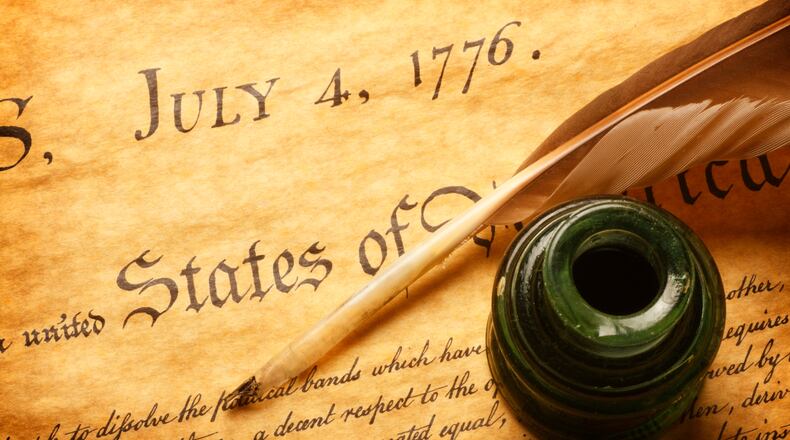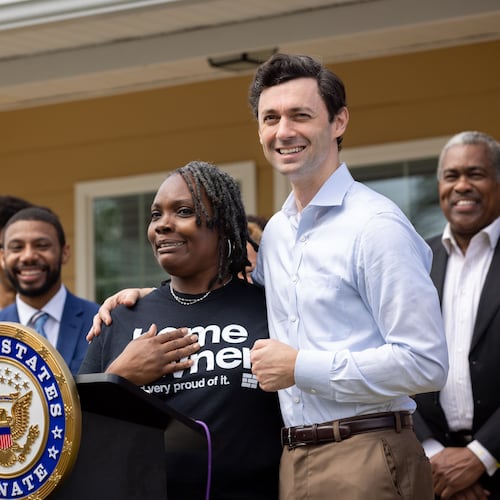On July 4th, we celebrate the signing of the Declaration of Independence, and its most famous and impactful line includes that people, “are endowed by their Creator with certain unalienable Rights, that among these are Life, Liberty and the pursuit of Happiness.”
The greatest threat to each one of these rights is violence.
As a military veteran, African American male physician and public health expert on the one hand and a Euro-American, Christian faith leader on the other, we appeal to our fellow Americans this 4th of July to come together in saying “Enough is Enough! We will pursue a world without violence.”
Violence has an immense impact on every aspect of our lives. Take a moment to imagine what a world without violence would really look like. Put aside what you may think is or is not possible. Just imagine this world without violence and the fear and the restrictions that it causes. What does real peace and freedom look like?
Credit: contributed
Credit: contributed
In a world of peace and freedom, children go to school without fear of bullying, witnessing or being victims of community violence, or the target of mass shootings. Teachers teach without hesitation and all children flourish in learning.
Parents send their children to school knowing they will come home unhurt and not killed. There are no mass shooting drills, no armed security guards, no metal detectors.
Credit: contributed
Credit: contributed
With true peace and freedom, people visit any city, any community, walk in any park, eat at any restaurant, without the risk of violence ever being a thought in their minds.
People – especially people who identify as women – feel safe in relationships, able to be themselves and to do what they want without fear of violent consequences. They go out by themselves after dark, without fear, without constantly looking over their shoulders, able to focus on their thoughts, free to walk under the stars whenever and wherever they want. Children grow up in homes without trauma, without violence or threats of violence, without stray bullets killing them in their dreams
People of all faiths, political persuasions, sexual preferences, or gender identities live their lives freely and openly express their thoughts and ideas without fear of being a target of violence. While everyone may not agree, disagreements lack threats of violence and never lead to violence.
The laws and policies that govern our communities will still need to be upheld, and law enforcement continues to play a necessary role. However, in a peaceful world without violence, police can be fully trained in human relations and conflict resolution and not rely on weapons or use violence in the enforcement of laws. Nor do the families of law enforcement need to worry about whether their loved ones will be hurt or killed in the line of duty.
In a world without violence, we can disarm racism and bigotry without using violence as a tool. Indeed, we would discover that racism and bigotry are themselves forms of violence, the hatred that they require is fundamentally based in violence, and that real freedom exists without them.
Most importantly, in a peace-based world, violence does not lead to the killing of thousands of people in the U.S. and nearly a half-million globally every year. Billions are not injured. The devastation which families and friends of the victims of violence experience would be energy released for celebrating and improving our world.
The usual challenges to all facets of life will not include violence because everyone sees and insists that violence is not acceptable. Violence only traps us in its cycle. We can never be free in its trap.
The new world that we have just envisioned together, a world without violence, is possible.
This may all seem like a dream, but it doesn’t have to be. At Cure Violence Global, we have seen numerous examples of people who were previously engaged in violence who have been helped to transform themselves into peaceful and productive members of society. Communities that once harbored violence have gone a year or more without bloodletting. Even communities with severe violence such as in Honduras, Colombia, and Mexico have seen violence drop up to 90%.
How is this possible? By interposing peace through intentional efforts to stop the violence and change the thinking and norms that help to spread violence. We break the cycle of violence when we can see the specific people who are behaving violently as having trauma or a mental health crisis, and they are able to get support and care well before it leads to the harming of oneself, others, or both. In communities experiencing violence, credible messengers exist who can learn how to set expectations for no violence in places where it is likely to erupt – at a street corner, in a park, in a school, at a protest. Peace comes from such efforts because they prevent conflicts from escalating to violence.
Langston Hughes sang, “Let America be America again. Let it be the dream it used to be.” In his poem, he spoke of how violence prevents the Dream of America. As we celebrate freedom and its promise for all, commit with us to a world without violence. In truth, we cannot enjoy our unalienable rights otherwise.
For surely, ultimate freedom means living free from violence.
Dr. Fredrick Echols, M.D., is the chief executive officer of Cure Violence Global and was born and raised in Atlanta. The Rev. Dr. Russell L. Meyer serves as executive director of the Florida Council of Churches and is helping launch the faith campaign “Pursue Peace. Secure Our Freedoms.’” Both are longtime advocates for equity and social justice.
About the Author
Keep Reading
The Latest
Featured





